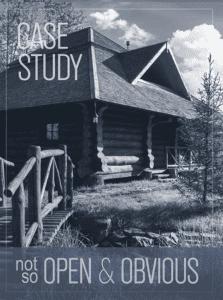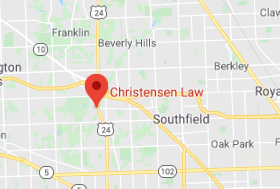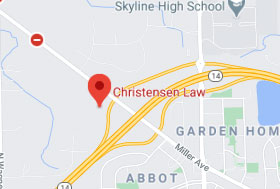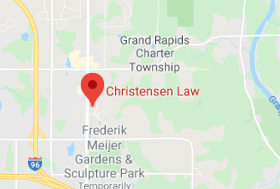
MICHIGAN’S OPEN AND OBVIOUS RULE IS OFTEN USED AS A MEANS TO AVOID LEGAL RESPONSIBILITY
On appeal, Christensen Law reverses an earlier trial judge’s ruling in favor of the landowner in a hazardous “open and obvious” case, securing justice and rightful compensation for our client. Download the full case study here in PDF form.
Michigan has a law that eliminates a landowner’s liability for dangerous conditions if a hazard is considered open and obvious. This rule applies to all kinds of hazards, even when a premises owner allows ice and snow to accumulate. It has been applied very strictly and has even prevented a blind person from suing – the principle has largely eliminated lawsuits for slip and fall accidents throughout the state.
Our client was seriously injured while staying at a rustic resort on Michigan’s west coast, where cabins were set among large trees and manicured lawns. The outdoors was not lit at night, so it was very dark in the walking areas under the trees.
The resort operated a small bus for guest transportation. One evening, after dark, the bus dropped our client and her friends off at the edge of the wooded area, leaving them to walk across the lawn to their cabins. There were no outside lights in the area, and the heavy tree canopy shielded any natural illumination.
Additionally, the resort had done some maintenance work on the lawn, leaving a one-foot-high stake in the grass that was painted dark blue, which rendered it invisible at night. Not surprisingly, our client could not see the hazard and her foot struck the stake. She suffered a terrible fracture of her ankle, requiring surgery to repair.
The trial judge found that the stake was open and obvious and threw out the case. We felt this ruling was very unfair because nobody would have been able to see and avoid the stake.
Christensen Law attorneys David Christensen, Sarah Stempky-Kime and Dustin Hoff, with outside counsel Mark Granzotto, fought on and appealed the ruling. The Michigan Court of Appeals agreed with us and reversed the trial judge’s ruling because the facts suggested that the stake was not open and obvious due to the lack of lighting in the area. As a result, our client obtained the compensation she deserved and received payment for her medical bills.
————–
Opinion Excerpts:
“In determining whether a condition is open and obvious, the equation involved is whether the danger, as presented, is open and obvious. The question is: Would an average user with ordinary intelligence have been able to discover the danger and the risk presented upon casual inspection? That is, is it reasonable to expect that the invitee would discover the danger?”
“The central issue before us is whether the trial court erred by granting summary disposition in defendant’s favor based on its determination that defendant had no duty to plaintiff as a matter of law because the post was open and obvious.”






